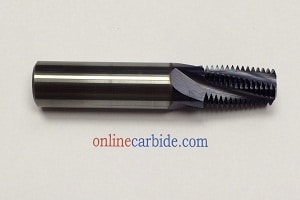Now that you have set your eyes on higher production goals, it is now time to become way more exigent when it comes to your tools. You not only need to buy carbide drills and call it a day. You need to find high-quality carbide tools that stay sharp and provide uniform results. The point of buying carbide drills is to increase accuracy, tool life, and predictability.

The problem with buying carbide tools is that there is no quality standard for carbide tools like there is for other materials. For example, steel tools have various classifications, and one can ask about their grade and obtain fairly clear answers. For instance, you have W-Grades that contain a higher concentration of carbon that makes them brittle but very sharp, or H-Grade steels that cut material at high temperatures and are made with other alloys.
On the other hand, the term carbide grade has a very broad application, especially in the world of tooling. Even identical carbide tools with different post-treatments are considered completely different grades.
Suppliers rarely agree on what constitutes a carbide grade or how to classify them. It is almost impossible to find a unified grade chart that allows you to compare tips and mills and their suitability for specific applications.
So, how do you know how to buy carbide drills for your operation?
You need to understand two basic factors that you need to take into account when deciding on a carbide tool. The core hardness and the coating.
Toughness Vs Hardness
Your tool´s core is the base material of your solid tool. It is usually 80-95% tungsten carbide, with added cobalt which modifies the carbide hardness. Lower concentrations of cobalt provide more hardness but also make the core more brittle which can cause micro breakages in operations that require constant interruption.
More cobalt will increase the toughness of your tool, allowing it to perform interrupted cuts without any major problems. However, more toughness also means that the tool loses its sharpness faster, and needs to be driven at lower speeds, impacting production times.
The Importance of Coatings
Most solid carbide tools are coated with a thin film made of titanium nitride, titanium aluminum nitride, aluminum titanium nitride, or titanium carbonitride. These coatings provide additional properties to the carbide core, such as hardness, increased heat deflection, and more efficient friction rates.
Coatings can be applied by using two methods. Chemical Vapor Deposition or CVD provides thick barriers that protect the core more effectively from heat, allowing the tool to run at faster speeds. However, this thickness reduces the sharpness of the tool considerably.
Physical Vapor Deposition or PVD allows for incredibly thin coats and enhanced sharpness. These need to be operated at comparatively lower speeds but generate less friction.
These coatings will yield very different results depending on the materials you are machining. If you are milling soft metals like aluminum, these coatings could actually prove detrimental. Some of them form an aluminum oxide barrier when heated, causing problems with chip evacuation that you really want to avoid. However, when you are milling harder materials such as stainless steel or Inconel, you need hard carbide treated with physical vapor deposition materials.
Now you have an idea of how to determine the carbide drills you need to buy. But there is a problem. How do you know if your provider can supply you with drills with a quality that is consistent and durable?
We find that the best solution is to find a trusted domestic supplier like Online Carbide. They offer high-quality carbide tools following rigorous standards of quality and environmental protection. Buy carbide drills from the true experts at manufacturer-direct prices. Visit their website or give them a call today.
For more information about Drill Mills and Chamfer End Mill Please visit: Online Carbide.




